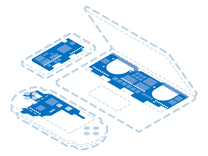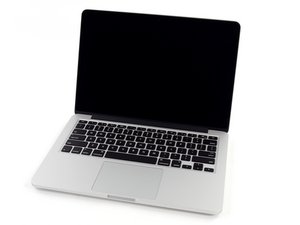internal ssd not showing up / blinking folder with question mark
Hi guys. Seeking your wisdom / opinion on this matter. Here goes:
I have a A1502 EMC 2678 type Macbook Pro Retina 13 inch laptop (MacBookPro 11,1 - SN: C02MCSSNFH00). Bought second hand, because parts in these are not soldered in, replaced original battery with a new set from ifixit. After that one of my speakers died, replaced that also. Upgraded the original SSD with a larger capacity, higher speed OWC SSD and one day out of the blue when I turned it on, after more than a year of flawless use, it gave me the flashing folder with the question mark. Just like that. Nothing happened, no spills, no bumps, no nothing. It was sitting on the desk as usual.
Tried putting back the original SSD. Same thing. Did a bit of googling. TLDR, it is probably the logic board, something on there that handles the SSD. I plugged in the SSD externally via the usb port on the side with an adapter and it boots, is usable, no problem, but it looks really bad with a long ssd sticking out on the side lol.
Now for my questions, using / fixing this laptop is so not feasible already and since I don't really have the time, patience or the nerves to put up with it anymore, I thought I'd ask you guys a couple of questions first before deciding what to do with it.
- Is there any diagnostics program that I could maybe run to rule out / make sure that it is the logic board before I buy a replacement? It is odd that it works with the internal drive plugged in externally.
- I see several refurbished boards with different specks: MacBook Pro 13" Retina (Late 2013) 2.4 GHz Logic Board or this MacBook Pro 13" Retina (Late 2013) 2.6 GHz Logic Board or this MacBook Pro 13" Retina (Late 2013) 2.8 GHz Logic Board.
The current supposedly faulty board is a 2.4 ghz dual core intel core i5 with 8 gb of ram 1600mhz ddr3 and an integrated graphics card (Intel Iris 1536 mb).
On the bottom of the page (3'rd link) at the compatibility section, A1502 EMC 2678 is listed so it should be compatible and I was thinking why not upgrade the laptop if I have to take it apart, plus I see that not only can I order a 2.8ghz cpu but I can choose 16gb of ram instead of 8 gb and the gpu seems to be also a different type / better Intel iris 5100. Are these boards interchangeable? My board seems to be the one in the first link with 8gb of ram but even that has a different gpu compared to mine I think. Do I need to replace it with an exact identical board or can I pay 350 dollars (fml, I bought the laptop for like 150 and already spent more than that on parts already) and have an upgraded board with better cpu, gpu and more ram?
Is there any way to rule out or pinpoint the problem? Any diagnostics tool or something that goes deeper th disk utility?
Thanks in advance!


Product
MacBook Pro 13" Retina (Late 2013) 2.4 GHz Logic Board
$149.99

Product
MacBook Pro 13" Retina (Late 2013) 2.6 GHz Logic Board
$219.99

Product
MacBook Pro 13" Retina (Late 2013) 2.8 GHz Logic Board
$169.99
Is this a good question?



 24
24  35
35  32
32 